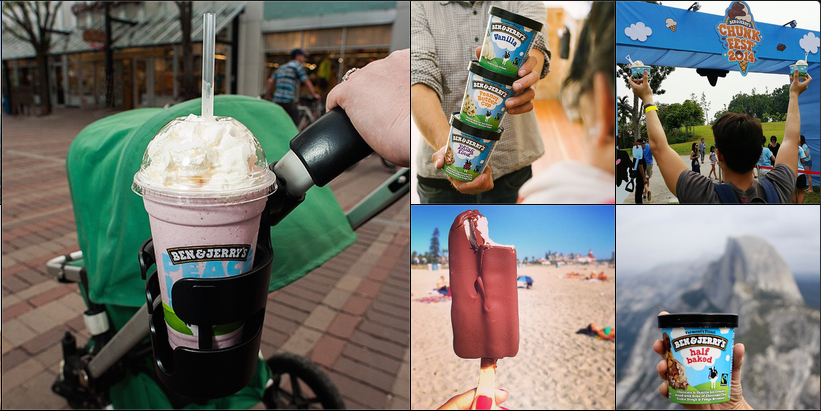In a world of increasingly short attention spans and bad airline service, Virgin America made a compelling case for long-form video content in detailing the strategy behind its own bold content move with a nearly six-hour video.
It’s an example of a brand with a firm sense of purpose – seeking to distinguish itself from other airlines with an equally unique video – and that also had fun with the content and concept.
But the brand and its agency cautioned recently at ad:tech that even though the long-form video worked for Virgin in this case, rather than content length, marketers’ focus should be on knowing a brand’s purpose, as well as on changing consumer behavior and attitude, in addition to whatever execution works for a given idea.
Have You Been Flying Blah Airlines?
Jon Gordon, creative design director at Virgin America, said while there are obvious advantages to being short and concise, Virgin nevertheless set out to make the longest ad possible in its Have You Been Flying BLAH Airlines? video.
Gordon calls the spot, which is nearly six hours long, the “longest ad ever” – which may have been true until Arby’s debuted its 8- and 13-hour videos of brisket and turkey roasting – and he said the brand wasn’t sure if consumers would actually watch the video, but they did. Indeed, per YouTube, the video has more than 830,000 views since it posted in October, despite what the brand says included little overt promotion.
In fact, per Aryan Aminzadeh, senior creative writer at creative marketing agency Eleven, the film is nearly six hours long in order to showcase precisely what it’s like to fly across the U.S. on a “boring” airline. She also said she was unsure whether consumers would watch – and keep watching – if that’s all there was.
While Blah Airlines is certainly boring, the team took care to intersperse just enough content to keep consumers watching. What’s more, the team creating the video was able to refer to its own painful flight experiences on other airlines to “create boring yet interesting content to watch,” she said.
In other words, the video is full of additional bits and pieces, like two inflight movies, as well as a cast of characters like a rambunctious child and bachelorette party attendee who has had too much to drink. In addition, Blah Airlines’ entertainment options include listening to the dictionary read aloud and Air Junk magazine, where customers can buy products like paper clips and bricks.
And, she notes, viewers don’t see any Virgin branding until approximately three hours and 30 minutes into the video when a Virgin plane flies by. Viewers who scroll over the plane are invited to “take a radical departure” and are then taken to the Virgin booking page.
Aminzadeh also said the brand made a purposeful decision not to include time codes to tip off viewers, and it’s “amazing how much word spread [about where the parts were] and it’s not an advertiser feeding them, ‘Watch this, watch that.”
As a result, Aminzadeh said the brand saw a 621 percent increase in conversations and 138 million earned media impressions as video preroll.
Gordon also said the brand wanted to “extend the bad flight experience beyond the flight itself.”
In order to do so, Virgin seeded multiple ways to get in touch with Blah Airlines throughout, including a website, as well as phone and fax numbers, an email address, a live chat option and content on social channels. Per Gordon, the Twitter handle includes “canned feedback” and the Instagram channel has “tons of uninspiring photos.”
‘Shake Travelers Out of Autopilot’
Gordon said Virgin came onto the scene “to make flying good again,” and notes the bar for the product experience (i.e., flying) was quite low, so the brand sought to improve the product itself by adding perks like entertainment systems on the back of every seat on its planes, along with other extras like Wi-Fi, outlets, and mood lighting.
“The problem we were facing is that people are beholden to legacy airlines, so we wanted to remind them they have a choice,” Gordon said. “So we went to our partner Eleven with this in mind to shake travelers out of autopilot.”
Instead of short ads with messaging about the brand’s amenities and advantages, Virgin opted to go in the opposite direction with a six-hour film about flying on its competition in which it “shared an experience where there was nothing to do, which is the opposite of our product,” Gordon said.
And thus Blah Airlines was born.
The Content Formula
As a result, Aminzadeh said the brand learned there is no precise formula for whether to produce long- or short-form content. It’s really just what works for a given idea.
“Our idea was we wanted to show you how boring it is when you’re not on Virgin and let’s do it all the way and take it seriously,” she said.
Marc Landsberg, CEO of social media agency socialdeviant, said not every unit of content will lead to a conversion, but the point here was to get consumers talking about Virgin in another way.
“The purchase funnel is nonlinear now and inherently social, so you have to find ways to create value for consumers,” Landsberg said. “We fundamentally believe the marketing job to be done in all cases is to change behavior and then through that behavior change, change attitude, and build some loyalty versus old marketing [tactics] that wanted to change attitude and then behavior.”
In other words, marketers shouldn’t necessarily ape Virgin and roll out their own six-hour videos. That’s because in order to be successful with content of any length, brands must first figure out what makes them tick.
Per Landsberg, content is the expression of brand purpose and it’s easy to point to brands that genuinely know their purpose, such as Nike, which is about the inner athlete, and Apple, which is about bringing technology to humanity. Or perhaps, say, Virgin.
“Once you nail [brand purpose], you can express yourself creatively,” Landsberg said.
It also shouldn’t be about creating content for a specific platform. In fact, per Landsberg, platform is one of the last things he talks about. Instead, he said he looks at the marketing job to be done, the fundamental truth about the audience, and then narrative containers and content types.
“New platforms come and go,” Landsberg said. “We love to ask ourselves, ‘What’s the best narrative containers?’ and then match that to the consumer need state.”
Regardless of whether a brand opts for short- or long-form content, the model must resonate with the audience, he said. And brands must think carefully about the medium for sharing the idea. They must also think about their objective and why consumers go to given platforms. Then they should think about content types and the format in which the idea comes to life and anchor content around the audience, Landsberg said.
“The question isn’t long or short, it’s, ‘Is this the right content for the right audience on the right platform in the right moment?’”
Brands must also identify the reason for creating the idea and tie it into an emotional need, which can even include functional needs such as providing information.
“What never changes is the anchor around the human condition,” Landsberg said. “Try to make sure to combine a fundamental human need with the marketing job to be done.”
Have you found your consumers have a preference for long-form or short-form video content?


